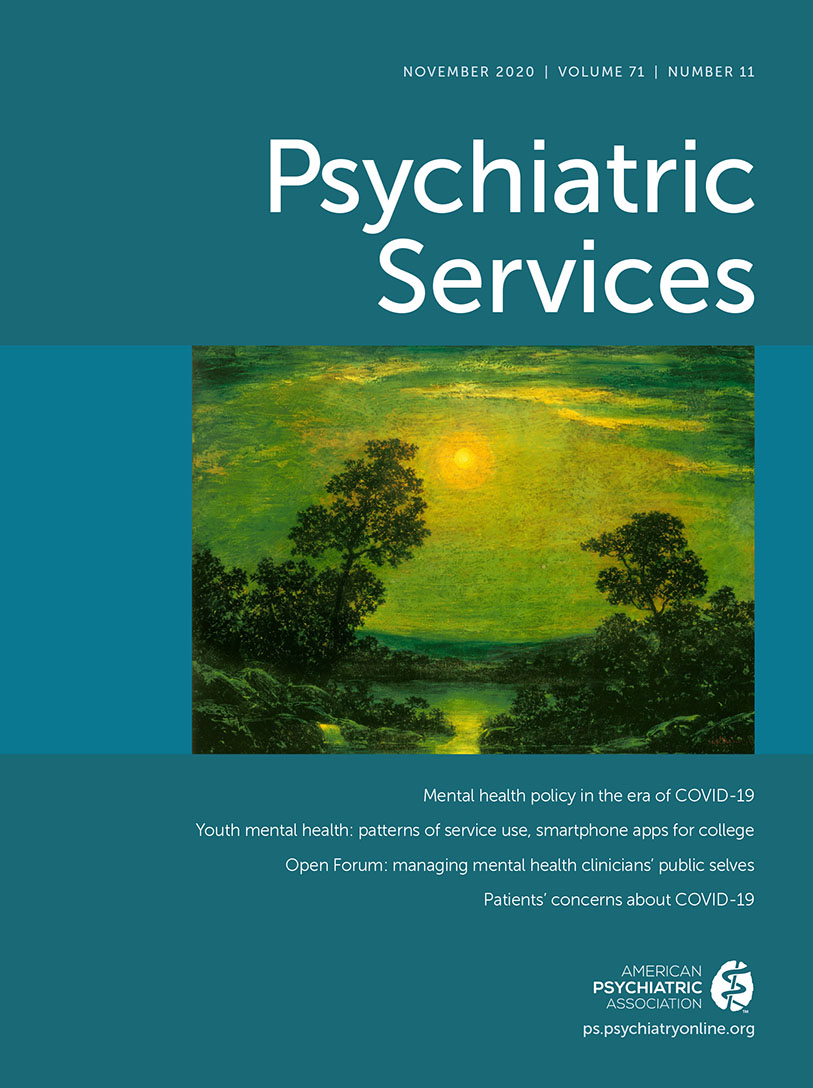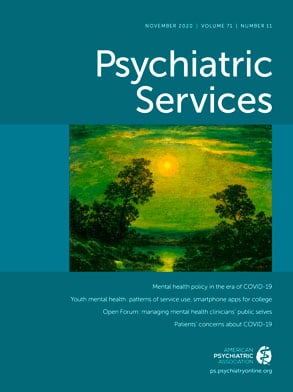In 2001, we published an article in
Psychiatric Services (
1) that provided a conceptual framework for the therapeutic use of self-disclosure, defined as any behavior or verbalization by providers to reveal personal information. The original model was designed primarily to help therapists manage inquiries made by patients during treatment in psychotherapy. Challenging the mistaken belief that self-disclosure should always be minimized, we argued that there are a variety of clinical circumstances in which the benefits of self-disclosure may outweigh its potential dangers. In 2001, mental health clinicians could maintain a degree of privacy by, for example, having an unlisted home telephone number and home address, but times have significantly changed. Now, with only a few clicks in a publicly accessible online database, Internet users can easily obtain a clinician’s home address and other information.
The Internet has fundamentally altered clinicians’ “public self” and facilitated its wide dissemination. What is the public self? An online psychology dictionary defines it as “the view of oneself by others as conveyed through public information, public action, and interaction with others” (
https://psychologydictionary.org/public-self). The Internet makes an enormous variety of information (both professional and personal) available with potential for benefit and harm to our ability to provide effective psychiatric treatment (
2–
7). The question clinicians face in delivering treatment has moved beyond whether to disclose personal information; rather, we as clinicians must manage the reality that a trove of information is now widely available to our patients, most of whom are online, and many of whom are Internet savvy (
5,
7). In this Open Forum, we review the potential benefits and challenges our public selves impose on our ability to provide effective treatment, and we offer guidance for clinicians to navigate today’s digital universe.
Digital literacy (i.e., one’s proficiency with using the Internet and social media to find and provide information) is a critical factor in optimizing management of the digital public self for clinical practice (
5,
6). Clinicians with greater digital literacy may have more comfort with and knowledge of the limited ability to keep information truly private online. The realization of these limits may be business as usual, and management strategies may be incorporated into practice more effectively. Providers with greater digital literacy may also have greater skills in maintaining the privacy of their information.
Although individuals of all ages may be digitally literate, the age at which clinicians become digitally proficient may influence how they interact with patients and digital media. Age can shape one’s experiences, values, and mores, which influence the public self. Much attention has been paid to Gen Z, or younger individuals, who have had their whole lives documented in the digital age with media that are often indelible, reposted, or reformatted by algorithms into new content. Such generational divides are meaningful. For example, a college student may be more comfortable texting with a therapist than is someone in his or her 60s, and taboos regarding self-disclosure and patients searching for their therapists online may vary by generation.
Types of Information
Professional versus personal.
Several relevant categories of information contribute to the public self. Professional information includes material related to the clinician’s work, including information on his or her professional training and background, academic papers, and work on committees and within organizations. This category can be further subdivided into information that has been intentionally curated for marketing or community education to promote the clinician’s practice or product (
8) and professional information that the clinician does not attempt to manage. Clinical practices often have websites that describe the expertise and experience of their clinicians. Similarly, all universities have a Web presence that showcases the accomplishments and qualifications of their faculty. Therefore, clinicians’ public selves result in part from their intentional efforts or from their affiliation with organizations that profile their associates online. It is important to note that professional information can be extremely useful in educating the public about a clinician’s work and in maintaining and growing a clinical practice. Clinicians should understand, however, that this information may reveal their commitments, associations, causes, and beliefs.
Personal information involves just about everything else concerning the clinician’s nonprofessional life, hobbies, and activities. This category can be subdivided into material that the clinician has intentionally shared on social media (e.g., information on Facebook and Twitter posted by the clinician) and information that others have shared (e.g., information about the clinician posted by a family member or friend). The availability of information shared by others is expanding; it is difficult to identify any personal data that could be confidently kept private. Disclosure of this personal information could be useful with certain patients (depending on age or culture), within certain practice settings (e.g., some community settings), and with therapeutic approaches in which disclosure is favorable in general (e.g., cognitive-behavioral therapy, internal family systems therapy, supportive therapies) (
1). On the other hand, the breadth and depth of this information could be overwhelming, and information about friends and family members may be particularly problematic.
Accurate versus inaccurate.
Some inaccuracies and falsehoods are likely to appear in the professional and personal information about clinicians available online. Although inaccuracies could be unintentional, the increasing availability of tools to mislead (e.g., applications used to put one’s face on another person’s body or to manipulate one’s voice) raises suspicion about the kinds of deceiving posts that could become commonplace. Additionally, the widespread use of online ratings of clinicians gives angry patients the opportunity to post false information; of course, clinicians could also fabricate positive evaluations (
9). Clinicians must be prepared to deal with the consequences of all available digital information, regardless of its veracity.
Publicly accessible versus purchased or hacked.
Much information that a clinician might prefer to remain private is relatively easy to access. For example, the purchase price of a house can easily be found online. Finding some personal information, on the other hand, requires more skill or deliberate expenditure of resources—either through purchase or by manipulating online tools. For example, with some hacking expertise, it is possible to discover a persons’ purchase or search history on Amazon. When information is obtained through hacking, clinicians should seek to understand what the patient is after and why (
10).
Guidance for Managing One’s Public Self
During the clinical encounter, clinicians must be prepared to manage personal and professional information as part of the therapeutic work. Clinicians should prepare for encounters with patients by considering a variety of digital literacy tasks. Guided by clinical experience and the available literature, we offer several recommendations (
Box 1) (
2–
7,
10–
12).
Conclusions
Information available in the digital age has changed the nature of the clinician-patient relationship, presenting both opportunities and pitfalls in clinical practice. Clinicians must understand and engage with these new vehicles of information and communication but must protect the quality and integrity of their practices from related risks.

